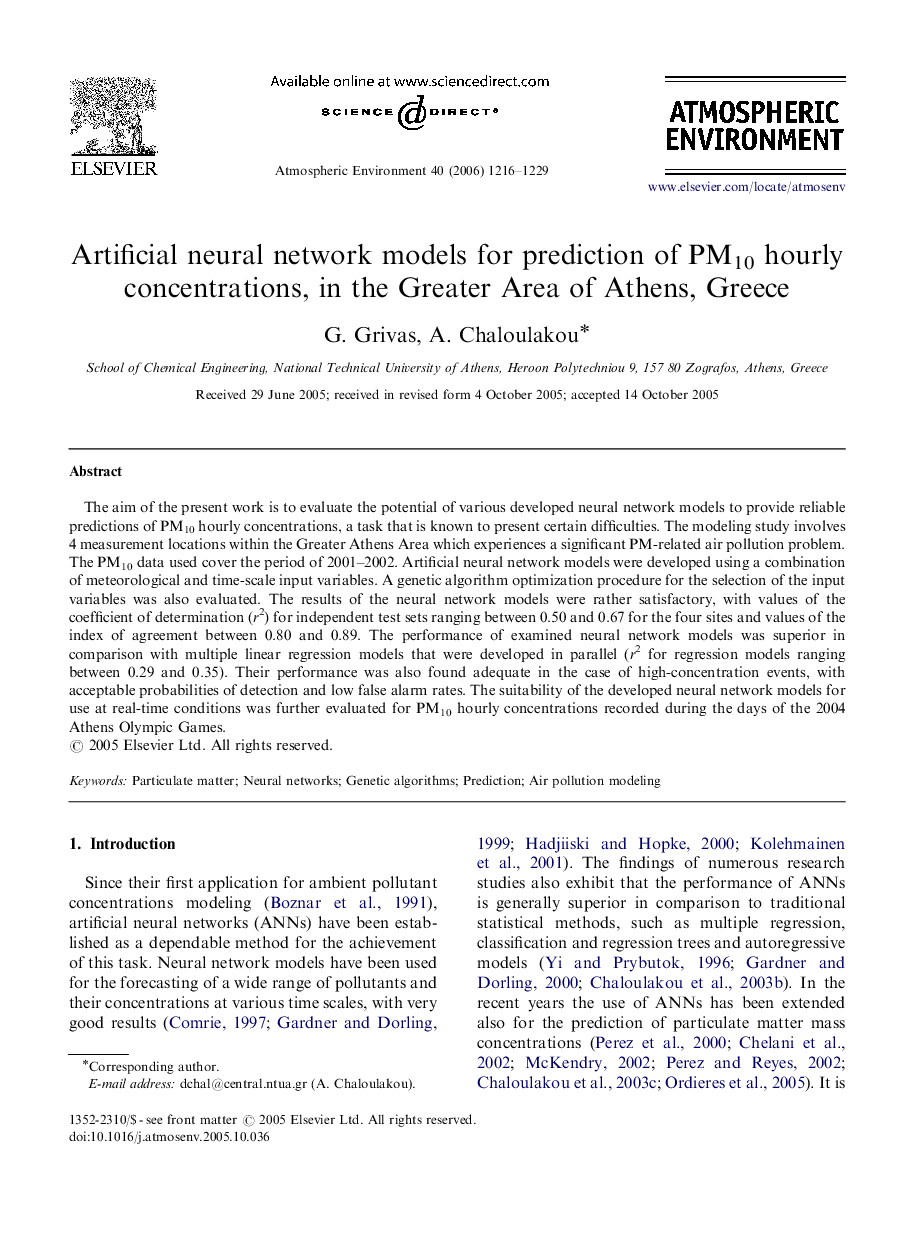| Article ID | Journal | Published Year | Pages | File Type |
|---|---|---|---|---|
| 4444804 | Atmospheric Environment | 2006 | 14 Pages |
The aim of the present work is to evaluate the potential of various developed neural network models to provide reliable predictions of PM10 hourly concentrations, a task that is known to present certain difficulties. The modeling study involves 4 measurement locations within the Greater Athens Area which experiences a significant PM-related air pollution problem. The PM10 data used cover the period of 2001–2002. Artificial neural network models were developed using a combination of meteorological and time-scale input variables. A genetic algorithm optimization procedure for the selection of the input variables was also evaluated. The results of the neural network models were rather satisfactory, with values of the coefficient of determination (r2) for independent test sets ranging between 0.50 and 0.67 for the four sites and values of the index of agreement between 0.80 and 0.89. The performance of examined neural network models was superior in comparison with multiple linear regression models that were developed in parallel (r2 for regression models ranging between 0.29 and 0.35). Their performance was also found adequate in the case of high-concentration events, with acceptable probabilities of detection and low false alarm rates. The suitability of the developed neural network models for use at real-time conditions was further evaluated for PM10 hourly concentrations recorded during the days of the 2004 Athens Olympic Games.
